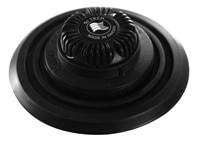A novel procedure of ascending as well.I don’t see one in this video
You are using an out of date browser. It may not display this or other websites correctly.
You should upgrade or use an alternative browser.
You should upgrade or use an alternative browser.
Question Why don’t drysuits have calf/ankle dump valves?
- Thread starter MacDuyver
- Start date
Please register or login
Welcome to ScubaBoard, the world's largest scuba diving community. Registration is not required to read the forums, but we encourage you to join. Joining has its benefits and enables you to participate in the discussions.
Benefits of registering include
- Ability to post and comment on topics and discussions.
- A Free photo gallery to share your dive photos with the world.
- You can make this box go away
I have a Seaskin.. pretty good size following on here. You can read all about them. I'm very happy with mine, probably best bang for your buck.I am still deciding on which one. Water gets chilly in Oki for the next couple months so it’s a good time to learn. I’d rather figure out deysuit on a nice subtropical island rather than figure it out when I get back to the inky waters of the Puget Sound
There are other drysuits, maybe even some that are nicer, but at the end of the day I'm still dry and that's what matters!
I’m looking at drysuits, it seems like it would help with inversion(?)
Not a question of concern, more just curiosity
Because in the trim position basically any air added to the suit would dump out a valve down there almost instantly and your upper body would stay cold and squeezed
broncobowsher
Contributor
Another for a made to measure suit.
I have small calves/ankles. An off the peg drysuit is over sized in that area. I fought it for years, got drysuit gators that helped a lot. Eventually got a made to measure. No gators needed. No floaty legs. That is probably the best part of the made to measure suit. With that, no need for tricks to make a poor fitting drysuit work good enough.
I have small calves/ankles. An off the peg drysuit is over sized in that area. I fought it for years, got drysuit gators that helped a lot. Eventually got a made to measure. No gators needed. No floaty legs. That is probably the best part of the made to measure suit. With that, no need for tricks to make a poor fitting drysuit work good enough.
L13
Contributor
As a new drysuit diver, this sounds like a good idea. Your biggest fear is inversion, it seems to happen at the drop of a hat, and it's hard to recover from.I’m looking at drysuits, it seems like it would help with inversion(?)
Not a question of concern, more just curiosity
By the time you have 50 drysuit dives (less for some people), you will wonder why you ever worried about it. Preventing it will be reflexive, and the few times it happens, you'll recover easily. By 100 drysuit dives, you'll start to find it hard to even relate to people who worry about it.
I seem to remember back in the day that the shop I worked out of sold Apollo Neoprene drysuits that came stock with ankle valves...
MacDuyver
Contributor
Okinawa is one of the best places to dive in the world. Pretty much the entire island is surrounded by reef to some extent or another. Japan has a marine national park about an hour boat ride off the west coast of the island that will ruin every other dive site you’ve been to. The water is beyond clear year round. I’ve stood on the deck of the boat and been able to look down and see the reef at 50ft.How's diving in Oki? Is there a better time of the year to dive there or is it all the same please?
Diving in the winter is “cold” but we’re talking the water being in the low 70’s. Most of the locals will do a drysuit if they go from Dec - mar. Summer (may June July) is by far the best time, followed by autumn, but in Sep/Oct (and beginning of November) there’s a damn typhoon every other weekend.
Okinawa is one of the best places to dive in the world. Pretty much the entire island is surrounded by reef to some extent or another. Japan has a marine national park about an hour boat ride off the west coast of the island that will ruin every other dive site you’ve been to. The water is beyond clear year round. I’ve stood on the deck of the boat and been able to look down and see the reef at 50ft.
Diving in the winter is “cold” but we’re talking the water being in the low 70’s. Most of the locals will do a drysuit if they go from Dec - mar. Summer is by far the best time, followed by autumn, but in Sep/Oct there’s a damn typhoon every other weekend.
I am going there then. Thank you for the information.
happy-diver
Skindiver Just feelin it
- Messages
- 5,326
- Reaction score
- 4,790
- # of dives
- 2500 - 4999

Sitech Cuff Dump ON/OFF - Seaskin Drysuits Shop - Purchase Drysuit Supplies
Small exhaust valve with On/Off mechanism. Valve measures approximately 45mm in diameter and sits approximately 16mm above the mounting port when in the Purchase Sitech Cuff Dump ON/OFF from Seaskin - drysuit supplies made to order directly from the factory.
Similar threads
- Replies
- 7
- Views
- 504
Question
Glove and pee systems
- Replies
- 52
- Views
- 2,223
- Question
- Replies
- 19
- Views
- 1,272
- Replies
- 6
- Views
- 567




